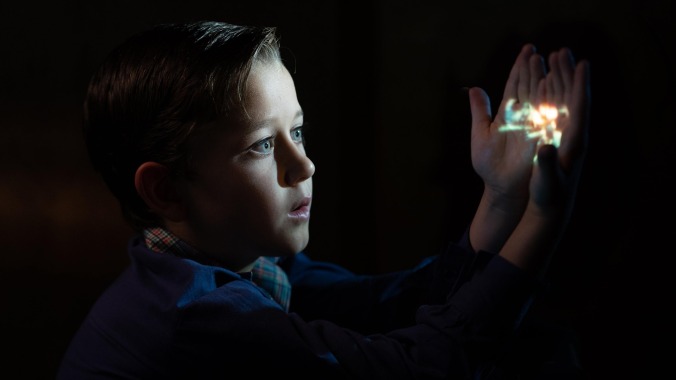Why it's so hard to see what's happening on your favorite movies and shows
It's not your imagination, filmmakers and showrunners are intentionally dimming the lights on their productions—here are your (limited) options to adjust

We’ve all been there. You tune into a show, often something in the fantasy or sci-fi genre, and you end up squinting at the screen because you can hardly make out what’s happening. Game Of Thrones is a notorious repeat offender (the season-eight episode “The Long Night” is often cited as one of the most egregious examples of this), but it’s not the only show or movie doing this. From The Batman to Daredevil to Ozark to The Mandalorian, the same complaints come up again and again. Is this a creative trend, the result of technical advances, or just bad filmmaking? We reached out to some experts for answers, and while it turns out to be a combination of all three, it seems that viewers also share some of the blame for the way they’re watching this content on their home screens.
“Where does the responsibility lie?” ponders cinematographer and colorist (or colourist, since he’s Canadian) Devan Scott. If you read his Twitter feed (@SadHillDevan), it’s full of keen observations on modern and historic cinema, but we were particularly interested in his take on the increasingly pervasive dark aesthetic. “Because, you know, Arrival is often seen as one of the major works in this kind of—I mean, I’m making up this term—New Darkness movement. Bradford Young, the cinematographer of Arrival, is probably one of the most controversial figures in this field. He also shot Solo, which is often brought up as a particularly dark film. If you watch Arrival in a cinema it looks great. I mean, assuming it’s a well-calibrated projector, it looks fantastic. But watch it at home in a bright room, it’s almost illegible. And I think it’s totally Bradford Young and [director] Denis Villeneuve’s right to make a film designed for cinema viewing, especially in the pre-pandemic era when cinemas were still in business. But then you have something like that one episode of Game Of Thrones, right? Where that is probably the single thing that’s brought up most. And I think you have a whole lot of things combining there. It was like a perfect storm.”
Paul Maletich, a digital imaging technician whose resume includes films like Blade Runner 2049 and Collateral as well as TV series like You and Mayfair Witches, agrees that the darkness we’re seeing is a deliberate decision on the part of creators. “It’s an artistic choice, absolutely,” says Maletich, whose job is to make sure everything is captured properly on set and to color the raw feed before it goes to post-production. “Sometimes the filmmakers don’t want you to see everything. If you catch just a cheek or you catch an eyelid, maybe that’s all they want you to see. You don’t have to see the entire face. It is intentional. Is it intentional 100 percent of the time? No, of course not.”
Entering the dark ages
Why do filmmakers do this if it makes their work harder to see? The short answer is because they can. In the days of 35mm film, directors had to ensure they captured everything on set as they were shooting. Their ability to adjust the image was extremely limited. Some notable cinematographers experimented with light and shadow—like Gordon Willis, whose shadowy cinematography for films like The Godfather earned him the nickname “The Prince of Darkness”—but generally everything was much brighter in days gone by. That all changed when digital cameras came onto the scene.
Scott sums it up this way: “What do artists do when presented with the new toolkit? They’re going to use it. But that’s also not inevitable, right? It’s a trend enabled by tools, but not made inevitable by them.”
Although the industrywide transition to digital was well under way by the time the Arri Alexa camera came out in 2010, its advanced sensor and image processing took digital filmmaking to a whole new level. With this new technology creators could produce a higher quality picture, and had more control over the final look of the film, and everyone wanted to try out the newest toys. Alexa quickly became the industry standard, but it wasn’t until the 2016 film Arrival—shot with the Alexa—that the dark aesthetic became really popular. You can credit (or blame, depending on your perspective) Villeneuve and Young for kicking off the trend in spectacular fashion, but even before that films like 2012’s Zero Dark Thirty were showing off what the camera could do in low light.
“I think that oftentimes we just straight up underrate artistic trends,” Scott says. “Those are two just large examples of very dark scenes that made a big impact on, for example, my generation of cinematographers. Everyone was talking about Arrival for a while and so those made an impact. I mean, I got asked, ‘How do I make my film look like Arrival?’ for two years.”
